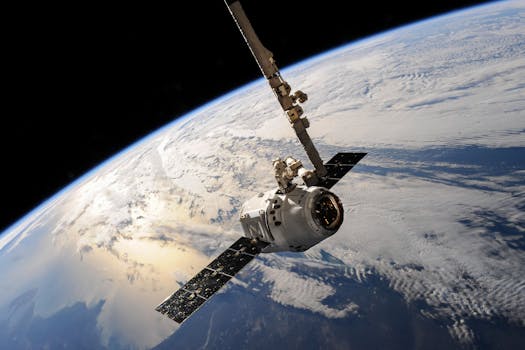
GEO satellites, or Geostationary Earth Orbit satellites, are a type of satellite that orbits the Earth at an altitude of approximately 36,000 kilometers, remaining stationary relative to a fixed point on the planet. The Focus Keyword: GEO satellites have been a cornerstone of modern telecommunications, navigation, and remote sensing applications, providing a wide range of benefits and opportunities for global connectivity.
One of the primary advantages of GEO satellites is their ability to provide continuous coverage of a specific region, making them ideal for applications such as telecommunications, broadcasting, and weather forecasting. By maintaining a stationary position in the sky, GEO satellites can transmit and receive data to and from a specific location, enabling reliable and consistent communication services.
In addition to their role in telecommunications, GEO satellites also play a critical role in navigation systems, such as the Global Positioning System (GPS). These satellites transmit precise location and time information, enabling users to determine their exact position and velocity. This technology has revolutionized the way we navigate, with applications in aviation, maritime, and land transportation.
Another significant application of GEO satellites is in remote sensing, which involves collecting data about the Earth’s surface and atmosphere using specialized instruments. These satellites can detect changes in the environment, such as deforestation, ocean currents, and weather patterns, providing valuable insights for scientists, policymakers, and emergency responders.
The technology behind GEO satellites has evolved significantly over the years, with advances in materials, propulsion systems, and instrumentation. Modern GEO satellites are equipped with high-gain antennas, transponders, and other specialized equipment, enabling them to transmit and receive large amounts of data. The development of new satellite constellations, such as the Amazon Kuiper System and the OneWeb constellation, is expected to further enhance the capabilities of GEO satellites, providing faster and more reliable connectivity services.
Despite the many benefits of GEO satellites, there are also challenges associated with their deployment and operation. One of the primary concerns is the risk of collisions with other satellites or space debris, which can cause significant damage and disruption to services. Additionally, the increasing number of satellites in orbit is leading to concerns about congestion, interference, and the potential for signal loss or degradation.
To address these challenges, the satellite industry is working to develop new technologies and strategies for managing the growing number of satellites in orbit. This includes the development of more efficient propulsion systems, advanced navigation systems, and improved collision avoidance maneuvers. Additionally, there is a growing focus on sustainability and environmental responsibility, with efforts to reduce the amount of waste and debris generated by satellite operations.
In conclusion, GEO satellites play a vital role in providing global connectivity, enabling communication, navigation, and remote sensing applications. As the demand for satellite services continues to grow, it is essential to address the challenges associated with their deployment and operation, while also investing in new technologies and strategies to enhance their capabilities and sustainability.
The future of GEO satellites is exciting and dynamic, with new applications and opportunities emerging all the time. From providing connectivity to underserved communities to enabling the development of new technologies, such as the Internet of Things (IoT), GEO satellites will continue to play a critical role in shaping the modern world. As we look to the future, it is essential to continue investing in research and development, while also addressing the challenges and concerns associated with satellite technology.
Overall, the importance of GEO satellites cannot be overstated, and their impact on modern society has been profound. As we continue to rely on these satellites for communication, navigation, and remote sensing applications, it is essential to prioritize their development, deployment, and operation, while also investing in new technologies and strategies to enhance their capabilities and sustainability.


